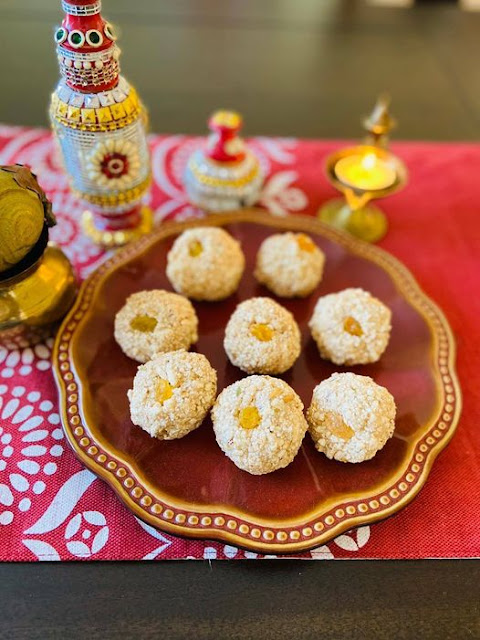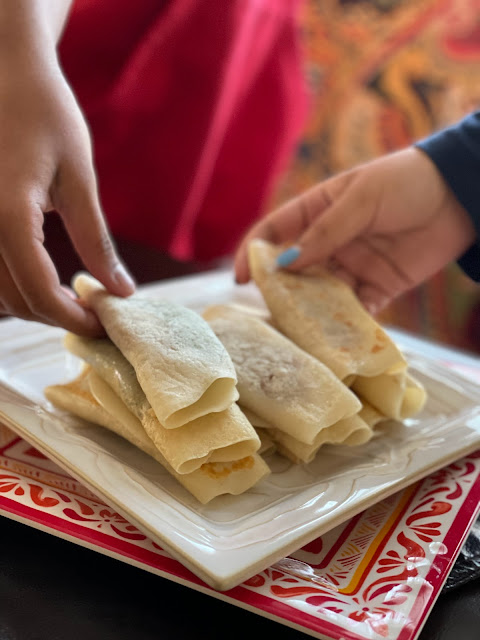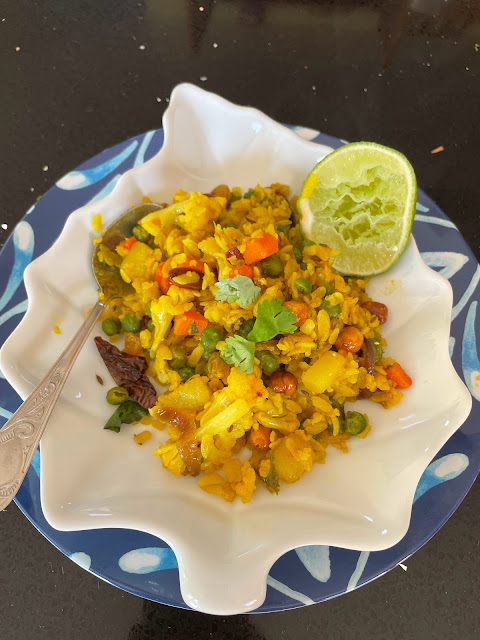Joynagar er Moa | a winter Bengali treat
Joynagar er Moa is a famous but rustic sweet of Bengal. Made from khoi , kheer and nolen gur, it is a rare winter treat made in the small town of Joynagar about 50 kms from Kolkata. What makes Joynagar er Moa so famous is the Kanakchur Khoi(Bengali: কনকচূড়) ,made from Kanakchur rice, an aromatic variety of rice from West Bengal, India. The popped rice or Khoi prepared from Kanakchur retains that aroma. This Khoi and locally harvested Nalen Gur(Khejur Gur) is used to prepare the Jaynagarer Moa. When one says local and seasonal, Khejur Gur and Joynangarer Moa are the first things that come to my mind! The Joynagar er Moa recipe I have shared here is with ingredients I get here in the US.
A few years back, Baba had sent me these pictures from the local sweet shops in Kolkata which also sell this sweet during winter. This was not the case when I was growing up. You could not just go to a store and buy it.
In our small, sleepy, town, quiet winter afternoons were frequently nudged out of slumber, by the soulful cries of "Moa chai... Joynagar er Moa" as hawkers from the village, went from home to home, selling this delicacy. The syllables rounded into soft o's and a's morphing into the sweet balls themselves with such potency that we often imitated the "Moa chai...Joynagar er Moa" cries during evening play. They would come on bicycles, loaded with plain white paper boxes tied with yellow or blue strings, the boxes labeled as "Joynagar er Moa" in Bengali scripts.
There was a certain longing in those cries, a clarion call, it stirred an intense desire within you and even if my Mother was taking a nap I would nudge her that the Joynagar er Moa guy is here. Some of those sellers were authentic, some not. Mother had an uncanny instinct and she would know. After the usual bargaining over price and quality a box was bought. Those plump round balls of khoi and kheer, with raisin at the center and sweetened with patali aka khejur gur were the treats we looked forward to every winter.
Here is the Joynagar er Moa or rather "Amar Nagar Moa" recipe. Now let me be clear, that the very unique taste of Joynagar er Moa, comes from ingredients(kanakchur khoi and poyra gur (liquid khejur gur)) specific to that area. Since you don't have access to those, yours will be close but never the same. Nothing can beat the taste of quality, local ingredients❤. But the unfortunate ones, living far away, can try to make a close second, or third.
I got this recipe from Bulbul Majumder last year and since then have made it a couple of time. Bulbul who is a Software Engineer by profession and a watercolor artist by passion. She believes that if we wish to achieve something from the heart we can always make it real. She lives on the side of the globe which is far apart from Bengali dishes but her strong wish and her Bengali taste buds inspires her to create the magic in her US kitchen.Bulbul is an artist par excellence and her paintings are truly mesmerizing.When I asked her, when she is feeling low, what is the one thing that makes her happy; her answer as expected was painting. It is a rare gift to have a passion that can bring so much happiness.#happinessproject






